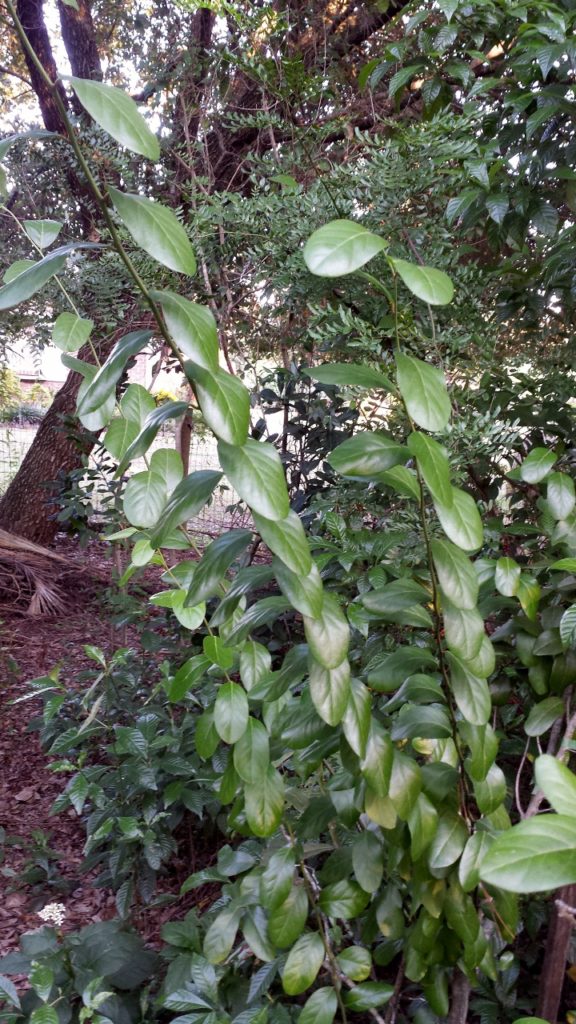
Limber Caper
Capparis flexuosa
Limber Caper or Bayleaf Capertree is naturally found along our east coast from the Keys to Volusia County. Usually it is found along the edge of mangroves where the soil is moist and rich, yet where it doesn’t get too much salt air or saltwater flooding. It may be seen growing over small trees or along the water’s edge as a tangled groundcover.
During the Spring, Florida White and Great Southern White butterflies may be seen laying their eggs on the new growth. Later, thousands of Great Southern White butterflies, which also lay their eggs on other mustard relatives like Cakile, Collards, Arugula, and Kale can be seen flying along the coastline and into our yards.
The leaves of Limber Caper are four inches long and oval. The pink flowers are wispy and three inches across. These are followed by a pod up to ten inches long or more with white coated seeds inside. The inside of the pod is deep pink and the combination of the two look like a grisly smile when the pod splits open. The fruit is not poisonous or tasty. This is one of the few plants I know of that is funny to look at.
Bayleaf Capertree needs fertile soil and a sunny location and can withstand dry periods quite well. It mixes well with other trees and shrubs as long as it gets a few hours of full sun each day. It does well on a fence or just allowed to spread and climb through the other trees.
Try a mixture of Limber Caper with Jamaica Caper, Wild Lime or Hercules Club, Redbay, Gumbo Limbo, Green Buttonwood, Saltbush, Saw Palmetto or Beach Cocoplum. This is a unique plant that should be added to a butterfly attracting garden. Click for more info